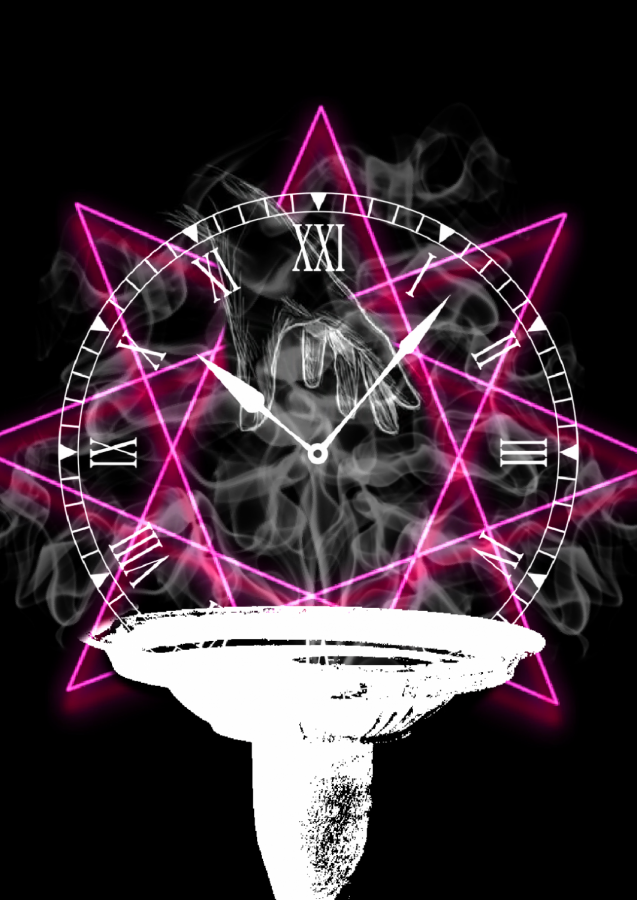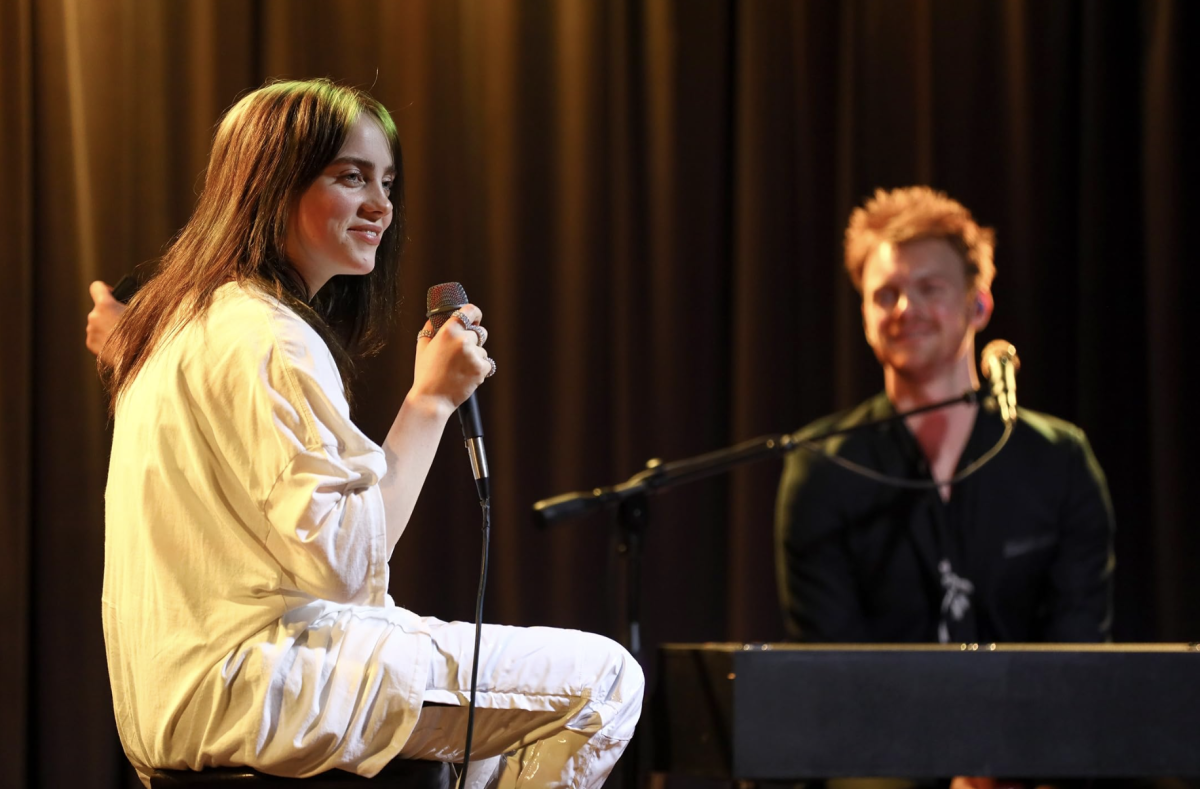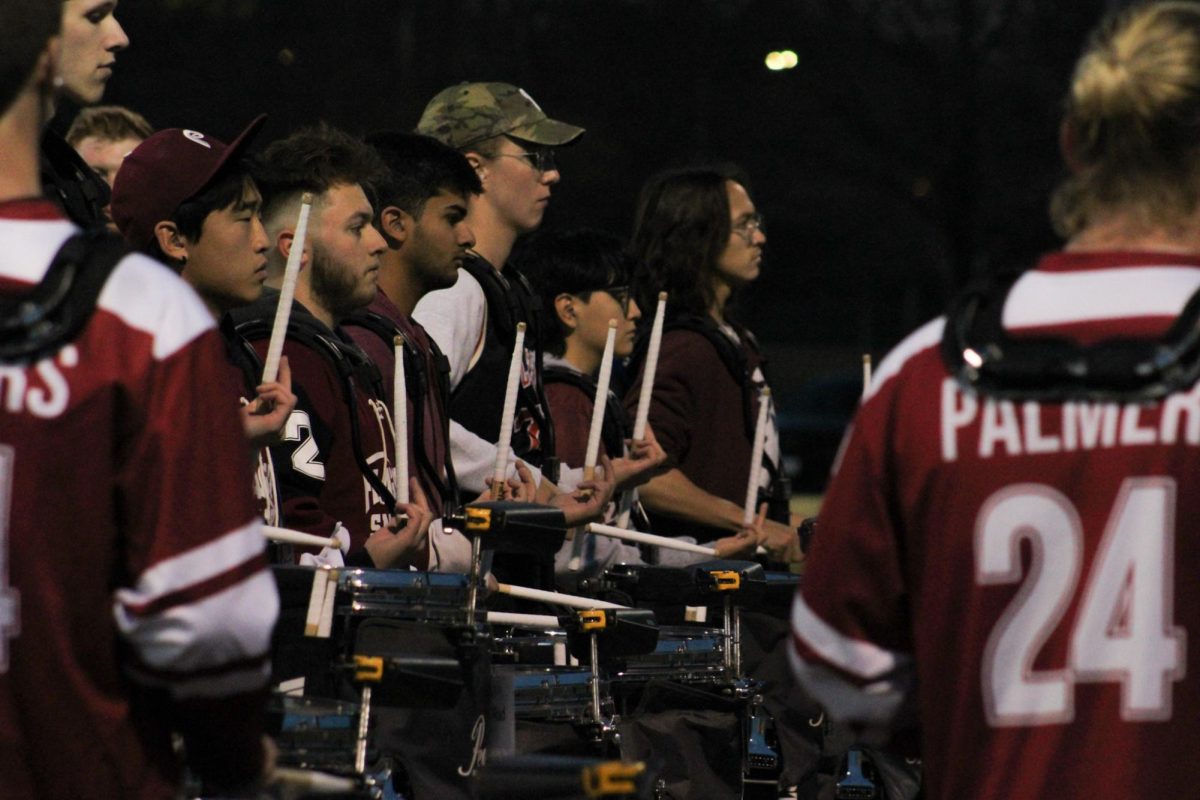It was a long, cold night when I first heard Wraithwalker. I was scanning through recommended songs, trying to find the next big name in Darksynth. After hours of listening to dozens of albums, the eerie opening of Wraithwalker’s Seraph seeped through my speakers. I was immediately intrigued. How had I not heard of this artist before?
Based in Atlanta, Georgia, Wraithwalker is one of the most recent additions to the Darksynth scene, as his first album was released in 2018. Yet, listening to his tracks, you might be inclined to think he was one of the original Darksynth producers. With his unique composition and use of synthesizer, Wraithwalker has, in my opinion, created some of the most memorable beats in Darksynth with tracks like Vertex and Nightwatch. Despite his relatively low notoriety, Wraithwalker has distinguished himself as one of the better producers in the electronic-melodic quadrant of the Darksynth scene.
Last week I had the pleasure of interviewing Wraithwalker. This is perhaps the most comprehensive artist interview I’ve conducted yet.
BC: What’s your favorite color?
Wraithwalker: I feel like this should be obvious; purple and black are my favorites. Which is perfect because these colors often fall in with Darksynth motifs.
BC: How would you describe your music to the layman?
WW: Usually I just tell people I make dark electronic music with retro synths, generally sort of inspired by sci fi, fantasy and horror works—games, books, films, anything.
BC: Got you. So, following off of that, what themes and ideas are you trying to express in your music?
WW: The way I see it, every song is like a story—it has an intro, a progression, a climax, etc. This is something I keep in mind when writing, whether it’s fun, upbeat and dancey, or slow, brooding and solemn. When people listen to my stuff, I want them to be immersed in it, to feel the vibe that I’m trying to pass along. If my track is able to make the audience imagine a sort of movie in their minds, then I’ve accomplished my goal.
I’ve always gravitated to dark and gloomy things, but I’m not shy about stepping outside this boundary. At the end of the day, this project is my creative outlet, and I’m going to keep making whatever I want regardless of what tropes people have come to associate with my act. I certainly think it’s more exciting than sticking to just one “signature sound.”
BC: Very articulate. So, given the variety of names artists in this genre use to classify their music, what do you like to call your music and why?
WW: I personally call it Darksynth, which I consider an offshoot of Synthwave more than it being “true” Synthwave. There’s less of a focus on 1980s nostalgia, but the raw sound of analog synthesis is still present. That being said, I also use modern digital synths and production techniques as well. I don’t believe in limiting myself to one or the other—I honestly feel that Synthwave reaches its full potential once people explore it without trapping themselves in the typical genre conventions.
BC: Alright, so what do you think about the Darksynth genre’s association by some as retro or nostalgic for the 1980s?
WW: I mean, it makes sense. Darksynth essentially spawned out of John Carpenter’s horror film soundtracks. From around 2010 onward, people took this idea and ran with it—artists like GosT and Gregorio Franco especially play up the “slasherwave” thing. Intense, frightening, designed to evoke (and perhaps accompany) the violent and bloody horror films of the ‘80s.
Then there’s the more cyberpunk side of things, like Perturbator and Mega Drive. They use plenty of retro synths but recontextualize them to fit this fictional atmosphere of the future as it was imagined in the 1980s, which is a major part of what inspired me—the creation of this dystopian futuristic soundscape that’s equally heavy and cinematic.
As for myself, I was born in 1995, so I feel no particular attachment to the 1980s despite enjoying much of the pop culture that came from this era. My personal nostalgia is rooted in late 1990s and early 2000s stuff—thus, there’s more of an industrial and house presence in my music. That’s what I grew up listening to.
BC: Why do you think the Darksynth scene is still underground, despite the popularity of many tracks and artists?
WW: That’s a good question! A lot of people have been waiting for it to blow up, but I don’t think it’ll reach mainstream popularity anytime soon. Darksynth mostly appeals to this weird intersection of electronic and metal fans, so by default it isn’t for everyone. The crowds at shows are small but diverse, and I think this tells a lot about the kind of people who are into it.
On the other hand, I think a large part of it falls to good marketing opportunities. Perturbator, GosT, Carpenter Brut, Mega Drive, etc. would not be where they are today without Hotline Miami. The game was wildly popular, but one could argue that the soundtrack has become even more of a phenomenon than the game itself. Was it all just a stroke of luck? Anyone can write a song and have it featured in a game or a film. Now, for it to blow up and elevate the soundtrack along with it—this seems extraordinary to me. It’s more the exception than the rule. Not to downplay the massive talent these artists clearly have, but talent alone will only get you so far, you know?
BC: Could you pick one of your favorite tracks and provide some background and details regarding its technical and thematic aspects?
WW: I think “Misericorde” is my most iconic track, one of three that I’ve always been proud of. I opened my first live show with this track.
I have to gripe a bit first… It’s rough being so new to production. I’ve only been doing this for two years, you know. I have a natural talent for songwriting despite knowing nothing about music theory, but I’ve had to study mixing and mastering extensively to figure out what I’m doing. Of course this leads to me constantly revising old tracks because most of the time they just need a little updating with my current knowledge to shine. I’ve actually remastered “Misericorde” very recently as part of a larger project to touch up my whole library and update everything on Bandcamp and Spotify. That’ll see a release date sometime this year.
Anyways, technical production stuff aside, a misericord is a long, thin knife used to administer a mercy killing, typically to knights left crippled and wounded on a battlefield. Badass, right? It’s where the rites of “misericordia” come from.
The earliest rendition dates back to April 2019. It’s basically the lead progression and that alternating chord pattern you hear during the chorus (very jazz piano inspired) all played using OBXD with a hint of reverb. I use OBXD on just about every song. I would kill to own an actual real life OBXa but they’re so damn expensive.
For the mid-level bass, I used Dune 2, which is the only modern wavetable synth on this track. Then TAL-Bassline (a TB-303 emulator) for the sub bass. The horn sound came from Arminator 2, a Yamaha CS-80 emulator which has become a recognizable staple in my library. It’s the synth from the Blade Runner soundtrack.
On the EP “Evergloam” my goal was to fuse Darksynth with the 1990s house tunes I grew up with, so it follows a typical four on the floor pattern with that sub heavy kick and scratchy snare. I had a lot of fun with the hats on the whole EP, lots of trills and patterns unusual for Darksynth. I’m very fond of the Roland TR-909 for drum samples. And the bell I sampled is from Metallica’s “For Whom The Bell Tolls,” which is honestly the only big bell sound anyone ever needs.
I’m very proud of “Misericorde” and “Evergloam” as a whole. I got the unique sound I expressly sought out to create. It’s dark, but not too dark. Very dancey as opposed to heavy. Perfect for a 90s warehouse vampire rave. Thematically very nihilistic and hedonistic. See the track “Cyclical Self-Abuse” which is literally about living in excess and partying to death. It’s oozing the goth attitude of “life sucks and nothing matters” but in a fun, twisted sort of way – you can still dance and enjoy yourself while it lasts.
BC: Do you find any significant difference in attending live performances over streaming your music?
WW: Differences musically, or like the audience?
Well, actually—I can’t say I know my audience all that well aside from the few people who regularly interact with me. Spotify plays are just statistics, and while I appreciate them, they’re no basis for getting to know people.
Music wise, I get extremely nervous about live performances and try to stick to theatrics. I might rehearse a few parts on my midi keyboard—I actually played an improvised solo during “Misericorde”, which wound up in the new remastered version because I loved it so much. But I don’t have the gear and technical skills to do much beyond letting the software do its thing. Of course, more experience means better live performances in the future, and I’m certainly looking to build and improve my set.
But the people who saw my first show at Echosynthetic Fest last November said it was good, and while it certainly had some issues, I don’t take their words for granted.
BC: Can you elaborate on the importance of your visual aesthetic, such as your album covers?
WW: All of my albums are color coded. I find that picking one color and making it dominant on the cover art helps to set the mood and give the listener an idea of what they’re in for. My next album will actually be blue, which may come as a shock to some people.
The rest is made up of themes or motifs that I identify or connect with—runes, sigils, magic, skulls, spiderwebs, graveyards, occult stuff, energy, electricity, colored lighting, circuitry, etc.
My costume and character are dear to me as well. To me, it’s more for protection than for glamour. I have extreme social anxiety and I feel very uncomfortable being seen and called by name. There’s absolutely no way I could go up on stage or have a large internet presence without some sort of disguise. To be able to change into something and be unrecognizable is liberating for me.
BC: What are some events you have coming up? And how might readers find out more about you?
WW: For now, I don’t have much planned beyond finishing my third album. I plan to take my time with it so I can push myself to a new level of songwriting, sound design and production quality.
People can find me on Facebook, Twitter, Instagram, Spotify and Bandcamp.
TW/IG: @wraithwalker_.
I’m always open to talking with new people—don’t hesitate to reach out and say hello.
Ben Connolly can be reached at [email protected].




















RG Geiger • Dec 13, 2021 at 12:50 pm
Excellent interview. Always interested in Dark wave since the days I was a contributor myself✓Bytet